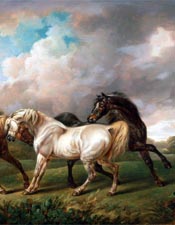Theory and Play of the Duende
, translated by Kline, A.S., (contact-email)
In his 1933 Buenos Aires lecture Theory and Play of the Duende, Federico García Lorca elucidates the term ‘duende,’ extending its association beyond flamenco to a broader artistic context. Lorca posits duende as an earthy spirit that imparts depth and authenticity to art. He distinguishes it from mere technique, viewing it as an emotive power that emanates from the artist’s confrontation with death. According to Lorca, duende is intrinsic to the creative process, driving the expression that resonates profoundly with audiences. This elemental force, central to Spanish arts and especially pivotal in flamenco, is akin to a house spirit from folklore, a mischievous being that commands the artist’s creative space. Lorca’s interpretation positions duende as a vital source of inspiration and genuine artistry.

Kline, A.S.,
Support Open-Access:
Your contribution keeps our classical translations available to all. Every dollar helps support classics education and funds the expansion of our catalogue. Value what we do? Donate now.
File Downloads:
© Copyright, All Rights Reserved. This work may be freely reproduced, stored and transmitted, electronically or otherwise, for any non-commercial purpose. Conditions and Exceptions apply.